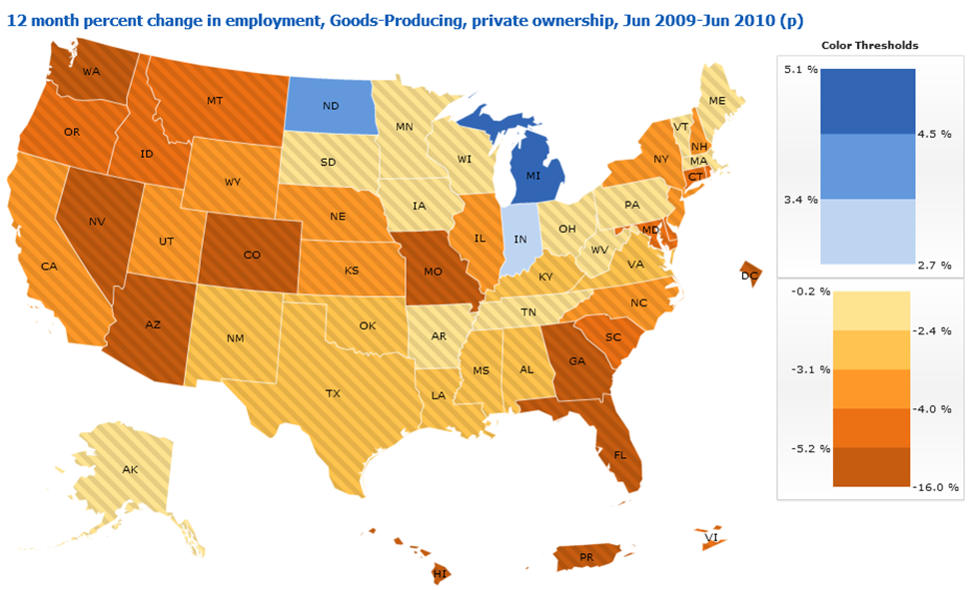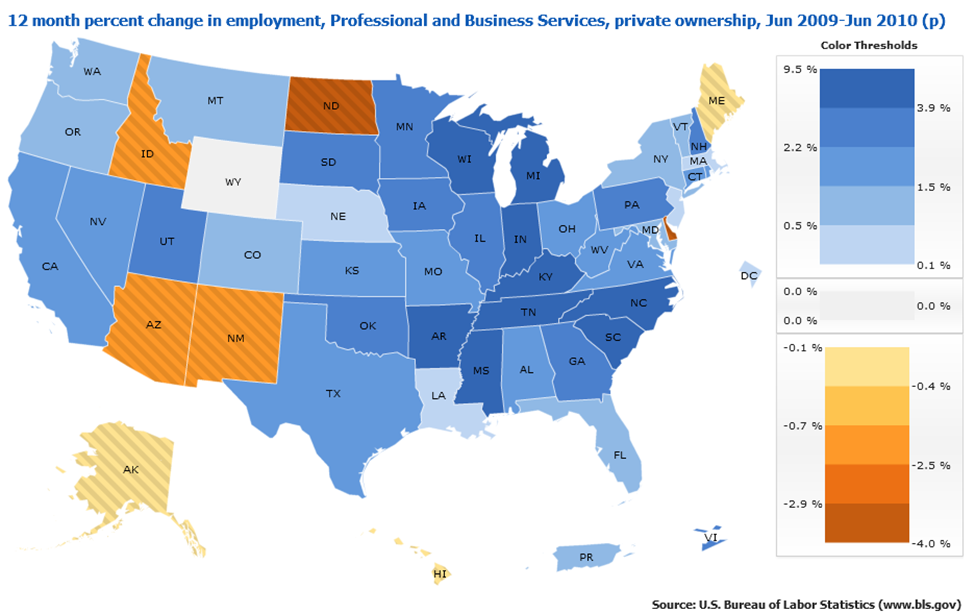
At first glance, supply chain metrics may seem to tell you a lot about your current supply chain operations. Look again! There might be more to the story.
Between 2009 and 2010 during the economic downturn, it was difficult to make sense of the unemployment numbers. The unadjusted unemployment rate in the US was at 9.8 percent, and it was trending down. Yet, traditional measures were not detecting new job openings. The number of job openings remained around 3 million nationwide at that time.
While both the hires and separations rates remained unchanged at 3.2 percent, compensation was increasing all over the country; from a low of 1.8% in the south to as much as 3.4 percent in Houston. This probably accounted for the unexpectedly high same-store sales growth in January of that year.
A little investigation clearly identified what was happening. If you compare the map of employment growth in professional services, it shows growth practically across the board (blue). The map of employment growth in goods-producing jobs was almost uniformly negative (brown or orange).


How does this relate to my supply chain?
For those that have worked in the supply chain, the situation is similar to reducing inventory and increasing receivables at the same time. It does not help the bottom line.
While aggregate unemployment numbers are useful for reporting the overall picture, they are not very useful for identifying what to do about it. In developing supply chain metrics, we need to be conscious of this as well. The metrics that we put in place must have the drill down capability to point us towards an action that will improve the overall metric. Unlike financial metrics which are primarily concerned with reporting performance, supply chain metrics must point towards an action or change is needed to improve the metric.
[Read Also: Forget the Supply Chain of 2020. Here are 3 Things That Supply Chains Need Today.]The other issue, of course, is that as the environment changes, the way we collect and tabulate metrics may not be relevant anymore. While new job creation is primarily calculated by polling existing corporations, it does not adequately measure the jobs created by start-ups and individual entrepreneurs.
For the same reasons supply chain metrics need to be reviewed over time. Often, the way we measure service levels and costs involve making assumptions that become invalid over time and need to be revised. This creates problems with comparing the metrics over time, but it is surely better to get a good picture of what is happening now rather than worry about making sure your report is accurate.
Have a supply chain topic that you would like us to discuss? Join the Arkieva Supply Chain Talk with Arkieva CEO Harpal Singh. Add a comment below or send a tweet to @Arkieva with #ArkievaSCT, or email editor@arkieva.com.
Enjoyed this post? Subscribe or follow Arkieva on Linkedin, Twitter, and Facebook for blog updates.





